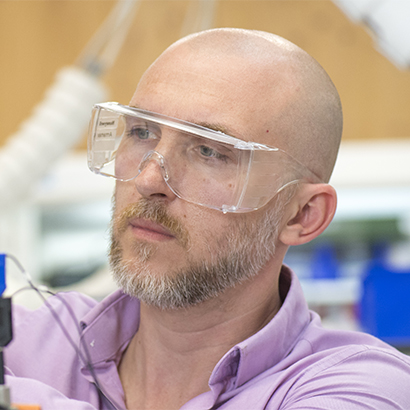Research at the University of Nottingham into the development of new materials and technologies for next generation batteries is one of four projects to receive additional funding from the Faraday Institution.
The Faraday Institution, the UK's flagship institute for electrochemical energy storage research has announced £19 million investment in four key battery research projects aimed at delivering beneficial impact for the UK. These existing projects in three research areas -- next generation cathode materials, electrode manufacturing and sodium-ion batteries -- have been reshaped to focus on the areas with the greatest potential for success.
As part of this project refocusing and its ongoing efforts to drive impact in energy storage research, the Faraday Institution recently issued an open call for short, costed proposals for new research topics with tightly defined scopes that strengthen delivery of these core research projects. The list of successful applicants is found here and the new research areas have been integrated into the coordinated projects. The round was highly competitive with 40 proposals submitted.
Researchers from the School of Chemistry have been awarded £230,000 as part of this project to drive innovation in energy storage technologies with their 'FutureCat' project that will transform the UK energy landscape from transportation to the grid.
The Nottingham FutureCat project is led by Dr Lee Johnson together with Professor Darren Walsh, Professor Pete License, and Dr Graham Newton, and is targeting the development of new electrolytes that will open up the use of next generation cathodes.
The FutureCat project will run over the next 2 years and cover:
Understanding novel redox processes as a route to stabilise both high capacity, high performance, nickel rich and emerging cathodes. The project continues its focus on doped and dual-doped lithium nickel oxides (LNO) (both polycrystalline and single crystals), including use of protective coatings. The team will also investigate the use of polyanionic cathodes, use modelling to inform the search for new candidate materials, and research designer electrolytes with the intention of stabilising the interphase layer.
Scalable designer morphologies. The project will build on its success with doped-LNO inDeveloping reliable, scalable routes to deliver longer lifetime, high-energy/power cathodes through the use of gradient morphologies, co-doped cathodes (with the aim of delivering reversible discharge capacities exceeding 220 /mAh/g), single crystal particles and thin coatings.
Materials delivery: The scale up of the high nickel W-LNO material previously developed by FutureCat is being transferred to the Degradation project for testing in industry-relevant pouch cells. FutureCat will continue to investigate the manufacturing scale-up of other Ni-rich cathode materials, down-selecting promising active materials based on earth-abundant elements. Research includes the use of laser patterning to increase power densities, investigation of cracking as a failure mechanism to determine routes to resilient cathode manufacture, atomic layer deposition of coatings to improve electrode longevity, and optimisation of cycle life through the use of electrically conductive binders.
Professor Serena Cussen, University of Sheffield, and Professor Louis Piper, WMG, University of Warwick, co-lead this project, which also comprises research teams at the universities of Cambridge, Birmingham, Imperial College London, Lancaster, and newly joined by Nottingham and Diamond Light Source.

As we push the limits of lithium-ion technology, instability at the interfaces becomes a limiting factor. The work at Nottingham will focus on the discovery of new electrolyte solutions able to tolerate these unstable conditions, which will greatly extend battery life.
The University of Nottingham is also a core partner in one of six key battery research projects that received a share of £29 million from the Faraday Institution earlier this year. These existing projects on extending battery life, battery modelling, recycling and reuse, safety, solid-state batteries, and lithium-sulfur batteries, have been reshaped to focus on the areas with the greatest potential for success.
The UK automotive sector is at the cutting edge of exploiting innovative technologies. These have the potential to create jobs, grow the economy and accelerate how we reach net-zero. This package of funding will help industry and government work together and take decisive action in targeting areas where the UK is leading the way. This government has shown time and time again that we are committed to creating the right conditions to make the UK the best location in the world to manufacture.
The Faraday Institution remains steadfast in its commitment to identify and invest in battery research initiatives that hold the greatest potential for making significant societal, environmental, and commercial contributions. This announcement signals the completion of our latest round of project refocusing, enabling us to allocate even more effort towards those areas of research that offer maximum potential in delivering transformative impact.
The majority of the funding for this programme, £17.1 million, is provided by the Faraday Battery Challenge, which is delivered by Innovate UK for UK Research and Innovation. The Department of Science, Innovation and Technology is providing £1.1 million of support for collaboration between US and UK researchers in next generation cathode materials over the period 1 October 2023 - 31 March 2025. The sodium-ion battery research project, NEXGENNA, is receiving £0.8 million over the same time period via UK aid from the UK government via Transforming Energy Access (TEA).






